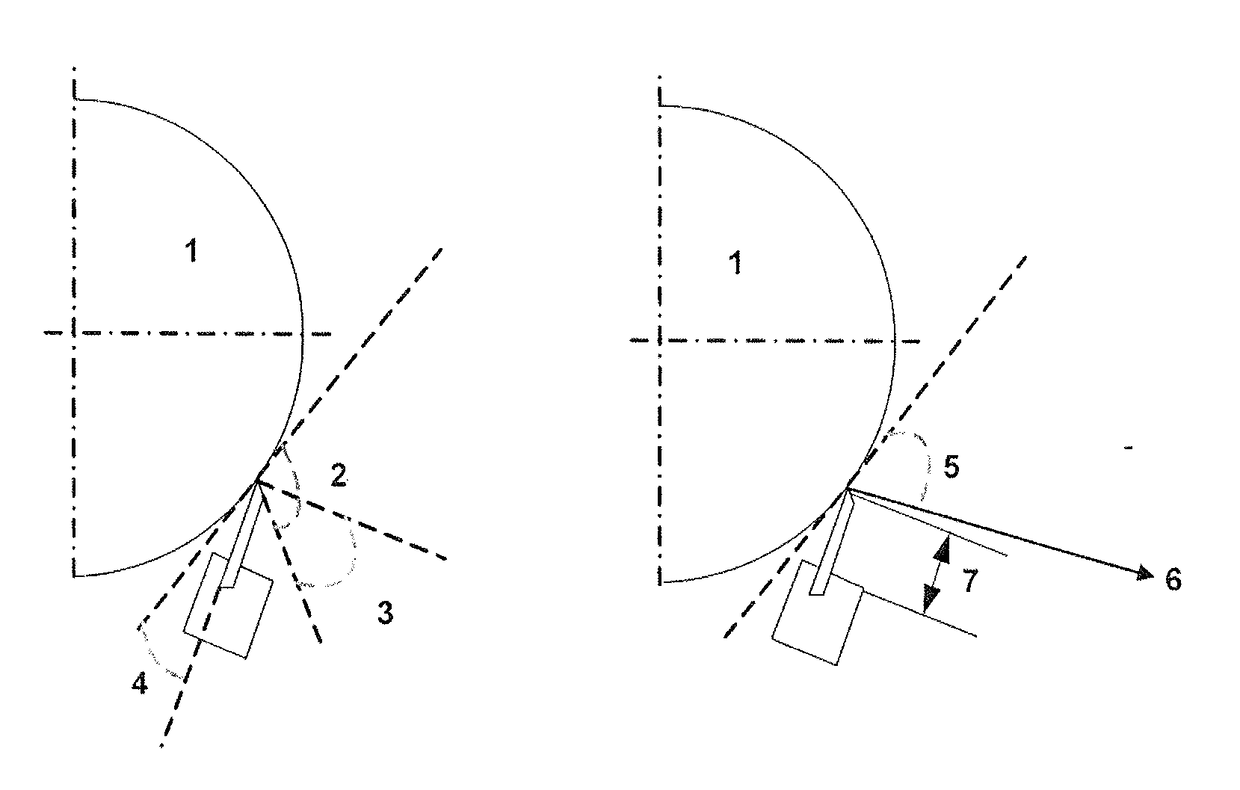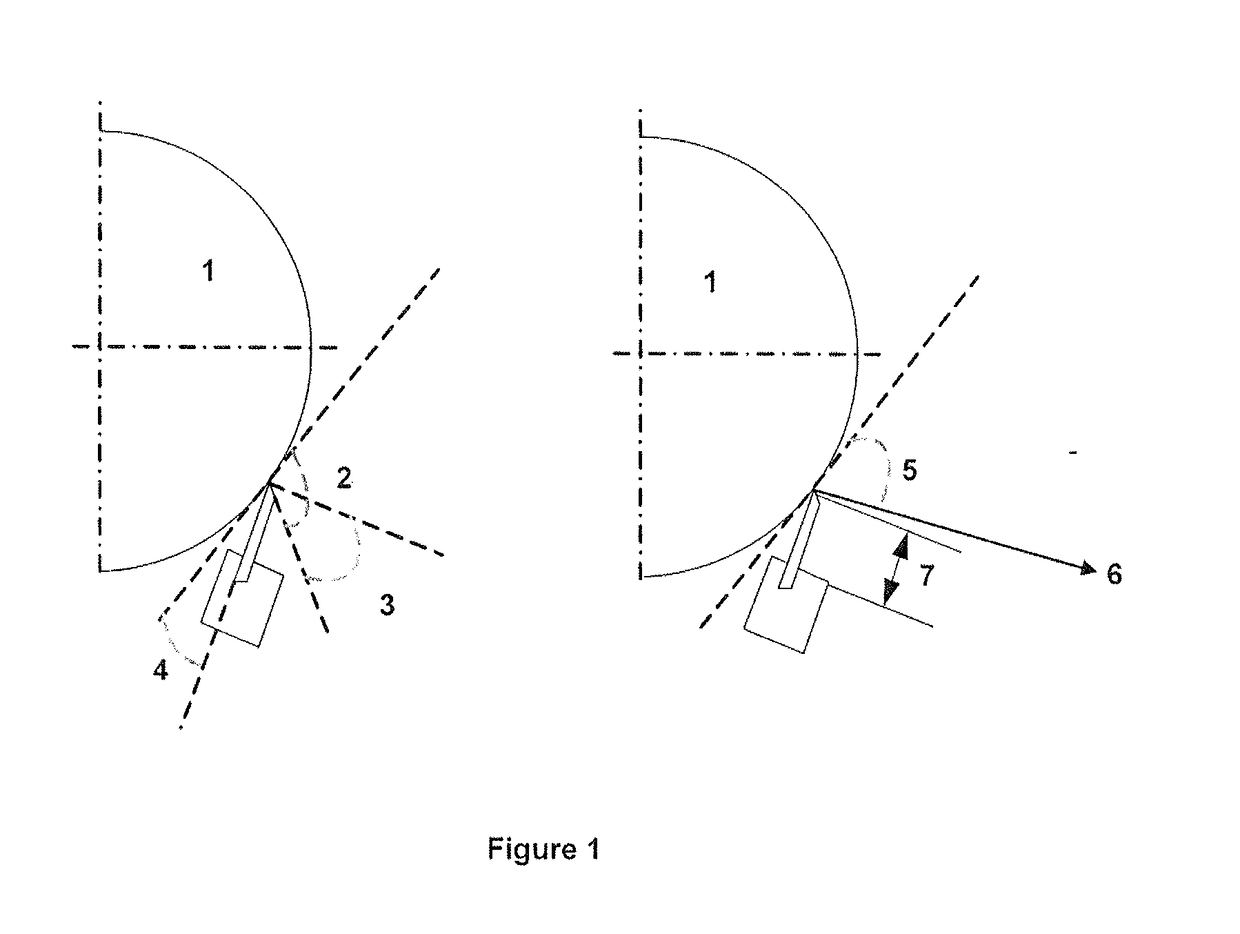Tissue paper comprising pulp fibers originating from miscanthus and method for manufacturing the same
a pulp fiber and tissue paper technology, applied in the field of soft and strong tissue paper, can solve the problems of insufficient strength of tissue paper, inconvenient manufacturing, and general conflicting properties of strength and softness, and achieve the effect of improving strength and good softness
- Summary
- Abstract
- Description
- Claims
- Application Information
AI Technical Summary
Benefits of technology
Problems solved by technology
Method used
Image
Examples
example 1-1 (
Reference Toilet Paper)
[0238]To achieve the desired finished toilet tissue paper one-ply base tissue was combined in a subsequent converting step to the final ply count (3). All three plies were produced in the same manner as described below:
[0239]The first furnish stream was prepared from unrefined HW pulp.
[0240]Then, SW pulp was refined to a freeness value of 21°SR to prepare a second furnish stream.
[0241]These two furnishes were supplied to the two chambers of a two-layer headbox. The furnish streams were kept separate through the headbox and deposited between a forming wire and a felt to form a two layer embryonic web containing 40 wt.-% of the refined SW pulp and 60 wt.-% of the unrefined HW pulp, respectively.
[0242]The embryonic web was dewatered in the shoe press to a dryness of about 42 to 48% and then led over the Yankee cylinder such that the HW pulp layer was in contact with the surface of the Yankee cylinder (“Y”) and the SW pulp layer was opposite the Hood (“H”).
[0243]A...
example 1-2 (
Toilet Paper with 12% MG Pulp)
[0248]A three-ply toilet paper was produced in the same manner as set forth in Example 1-1 apart from the following differences.[0249]The first furnish stream was a ¼ mixture of unrefined MG pulp and unrefined HW pulp, respectively.[0250]The SW pulp used for the second furnish stream was refined to a slightly higher freeness value of 22°SR.
[0251]In the manufacture of the resulting two-layer webs, the SW pulp layer (40%) was located on the hood side, while the layer on the Yankee side included 12% MG pulp and 48% HW pulp, each based on the total weight of the web.
[0252]These three paper webs were bonded to each other by decor laminating / embossing and cut to size in the same manner as described in Example 1-1. They were bonded in such a manner that the MG pulp-containing layers (produced from the first furnish stream) of the two outer webs (plies) were located each on the outside of the three-ply toilet paper.
example 1-3 (
Toilet Paper with 60% MG Pulp)
[0253]A three ply toilet paper was produced in the same manner as set forth in Example 1-1 apart from the following difference:[0254]The first furnish stream contained only unrefined MG pulp.
[0255]In the manufacture of the resulting two-layer webs, the SW pulp layer (40%) was located on the Hood side (“H”), while the layer on the Yankee side (“Y”) included 60% MG pulp, each based on the total weight of the web.
[0256]These three paper webs were bonded to each other by decor laminating / embossing and cut to size size in the same manner as described in Example 1-1. They were bonded in such a manner that the MG pulp-containing layers of the two outer webs (plies) were located each on the outside of the three-ply toilet paper.
[0257]The properties of the toilet papers obtained in examples 1-1, 1-2 and 1-3 were evaluated according to the procedures explained hereinbefore. The results were as shown in table 1 below.
TABLE 1Example 1-1(Reference)Example 1-2Example...
PUM
| Property | Measurement | Unit |
|---|---|---|
| weight ratio | aaaaa | aaaaa |
| diameter | aaaaa | aaaaa |
| thickness | aaaaa | aaaaa |
Abstract
Description
Claims
Application Information
 Login to View More
Login to View More - R&D
- Intellectual Property
- Life Sciences
- Materials
- Tech Scout
- Unparalleled Data Quality
- Higher Quality Content
- 60% Fewer Hallucinations
Browse by: Latest US Patents, China's latest patents, Technical Efficacy Thesaurus, Application Domain, Technology Topic, Popular Technical Reports.
© 2025 PatSnap. All rights reserved.Legal|Privacy policy|Modern Slavery Act Transparency Statement|Sitemap|About US| Contact US: help@patsnap.com


